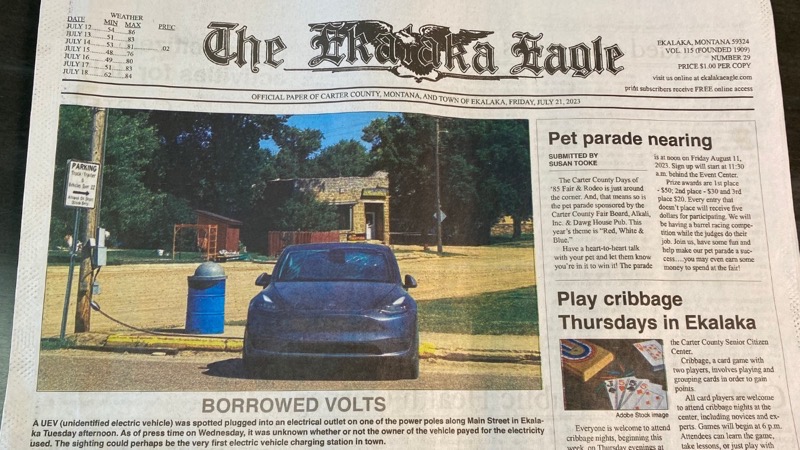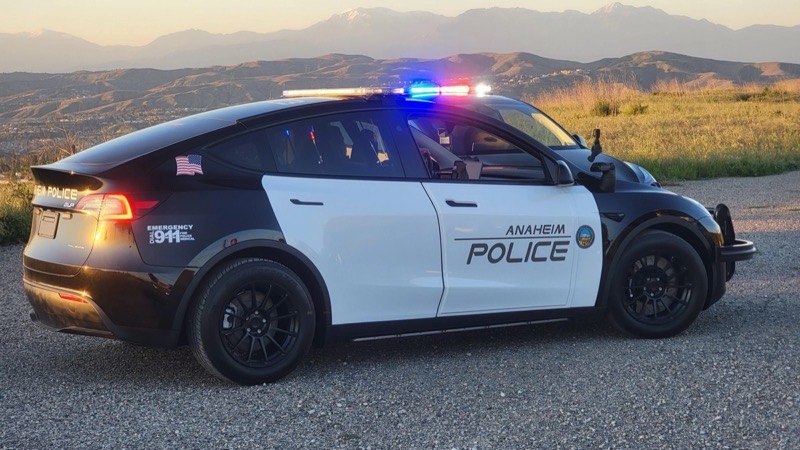
Tesla Charging Incident Sparks EV Discussion in Tiny Montana Town

Image credit: Montana Free Press
In the small eastern Montana town of Ekalaka (population: 400), an ‘unidentified electric vehicle,’ later revealed to be a Tesla Model Y, has drawn significant attention for tapping into the local electric utility.
This sparked gossip and led to front page coverage in the local newspaper. The car belonged to Chad Lauterbach and his girlfriend, Allis Markham, who had driven from Los Angeles to volunteer at the county museum’s annual dinosaur festival. Markham, a well-known taxidermist, normally drives a 1989 Toyota Land Cruiser, but given its terrible fuel economy, the couple opted for Lauterbach’s Model Y.
Despite warnings from their car’s navigation system about the lack of charging networks in Ekalaka’s remote corner of southeast Montana, the couple proceeded. On arrival, they found an unlocked RV-style outlet attached to a utility pole on Main Street and used it to charge the Tesla. Normally, the outlet is locked and mainly used to power street vendors during fairs and other events.
The local newspaper, the Ekalaka Eagle, printed a picture of the charging Tesla on its front page, suggesting it might be the first time an electric vehicle had been charged in the town. Upon seeing this, Markham quickly went to the local power utility, the Southeast Electric Cooperative, to pay for the electricity used. After a round of laughter and negotiation, they paid $60, covering the car’s charging and power for a musician at the dinosaur festival, reports the Montana Free Press.
This incident led to discussions about setting up a charging station in the town. The co-op’s manager, Tye Williams, mentioned they’ve been considering this for a while, but no definitive plans have been made.
Despite the availability of state grant money for installing charging stations, he noted that Ekalaka’s remote location makes it a low priority. This event sparked a lively debate on the future of transportation in one of the most remote counties in the lower 48 states.

